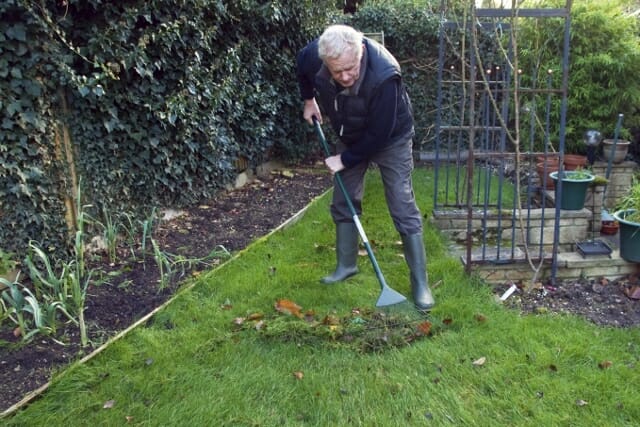
Winterize Your Garden
Dr. Leonard Perry,
Extension Professor University of Vermont
 Just as you make sure your car is ready for winter this time of year, so should you make sure your garden is ready. Cleaning up the debris in your garden, removing dead foliage, and cutting back dead growth on perennials are some of the ways to ready your landscape for winter.
Just as you make sure your car is ready for winter this time of year, so should you make sure your garden is ready. Cleaning up the debris in your garden, removing dead foliage, and cutting back dead growth on perennials are some of the ways to ready your landscape for winter.
These are all measures that not only get your garden and flower beds ready for planting and new growth next spring, but they also prevent overwintering pests and diseases on rotting foliage. Rake leaves from under fruit trees, especially ones that may have been diseased. Be sure to throw out or burn any diseased foliage. Don’t put it into the compost pile.
Have you raked those fallen leaves yet? The grass is still green underneath and can use all the light possible to prepare for winter. Removing leaves also allows water and air to get to the living plants, preventing them from suffocating. For this reason, leaves, especially tough ones that pack down and rot slowly like oak leaves, do not make good mulch for perennials and should be raked off perennial beds.
Now is still the time to plant peony roots. It’s too late to divide other perennials, but there’s still time to mulch shrubs, trees, and perennial beds with a loose organic material such as bark mulch or shredded leaves. Do it now, and you will have one less job to worry about in the spring. Mulches also help protect roots during winter from cold and fluctuating temperatures.
Don’t mulch too thickly–no more than a few inches–around woody trees and shrubs as the mulch makes a nice home for mice which chew bark. If packed around tree trunks too thick, mulch can smother the tree and cause it to die.
Speaking of mice, they as well as rabbits and other animals often chew bark of shrubs and trees during winter when they’re hungry and there is little food around. You can spray repellents on stems of shrubs, and put tree guards around trunks of young trees. Older trees are more resistant to their chewing. You can buy tree guards that easily slip around trunks at complete garden stores or online, or you can make them simply with short sections of hardware cloth wire mesh. Just make sure they extend above the usual snow level.
If you have heavy deer pressure in your locale, make sure to spray any valuable shrubs or trees with repellents. Taste and smell repellents can be purchased that will last for weeks before reapplication. If there aren’t many deer, or there is alternative food, simply hanging human hair or bars of soap near shrubs may suffice. If there are many deer or they’re hungry enough, only fencing may work. Unobtrusive black mesh can be purchased in heights from 5 to 8 feet.
Have you protected your evergreens from drying winter winds? In colder weather the roots of evergreens are frozen and unable to take up water. Winter winds may “desiccate” or dry them out, eventually causing them to die. This is why leaves turn brown–from lack of water.
Protect them by putting up a screen on the windy sides, usually the north and west. This can be as simple as erecting three wooden stakes and wrapping burlap around them. But whatever you do, don’t cover the plants directly with plastic. It will heat up like a greenhouse on sunny days and cook your plants. Or, you can spray evergreens with an “antidessicant”, available from your local garden center. This provides a protective layer on the leaves that will wear off by spring. Some years this may work or not, depending on specific conditions and climate that year. Research results are mixed on whether or not antidessicants are effective.
11/1/14 Distribution of this release is made possible by University of Vermont Extension and New England Grows–a conference providing education for industry professionals and support for Extension’s outreach efforts in horticulture.
Explore Communities with Community Gardens
Receive your complimentary Relocation guide and magazine


